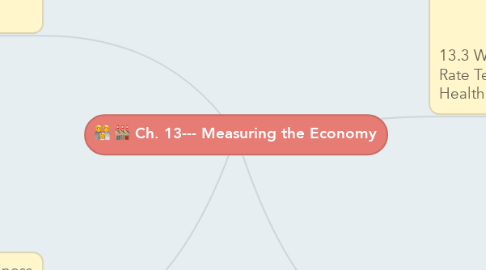Ch. 13--- Measuring the Economy
by Tristin Yellow Bird


1. 13.3 What Does the Unemployment Rate Tell Us About an Economy's Health?
1.1. Every month, the BLS surveys 60,000 households and determines how many people are employed, unemployed, or in the labor force. They'll use this data to determine the nationwide unemployment rate.
1.2. The BLS adds together the number of people employed and unemployed to get the amount of people in the labor force. To calculate the unemployment rate, it then divides the number of unemployed people by the number in the labor force.
1.3. The official unemployment rate serves as a fairly good indicator of conditions in the labor market and in general, when the rate is high, the overall health of the economy is poor
1.4. Unemployment Rate - Measure of the prevalence of unemployment.
1.5. Underground Economy - A sector of the economy based on illegal activities.
2. 13.2 How Do Economists Measure the Size of an Economy?
2.1. The main measure of the size of a nation's economy is it's gross domestic product.
2.2. Economist typically calculate GDP by measuring expenditures on goods and services produced in a country.
2.3. Economists use GDP figures to determine not only how big an economy is but whether it is growing or shrinking and at what rate.
2.4. Gross Domestic Product (GDP) - The market value of all goods and services produced within country during a given period of time.
2.5. Per Capita GDP - A nation's real GDP divided by it's population; a measure of average economic output per person.
3. 13.4 What Does the Inflation Rate Reveal About an Economy's Health?
3.1. The BLS tracks inflation by gathering information on Americas' cost of living. They track changes in the cost of living using what is known as the consumer price index.
3.1.1. e
